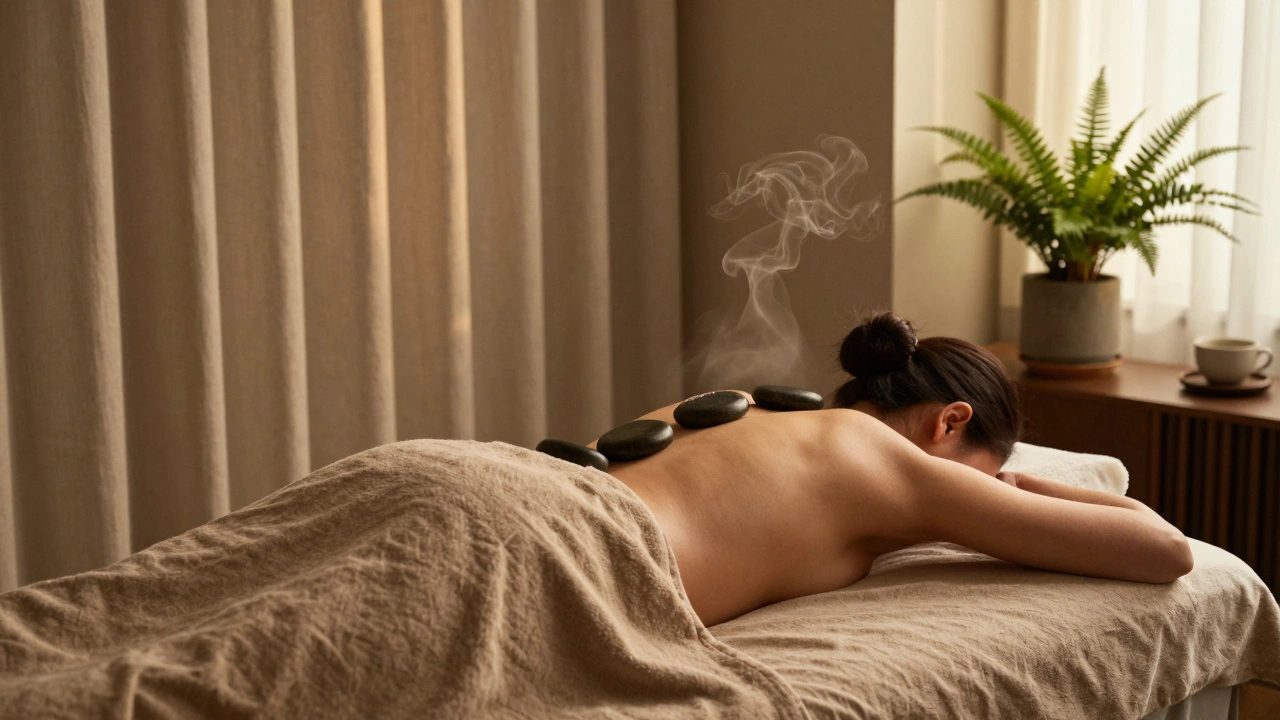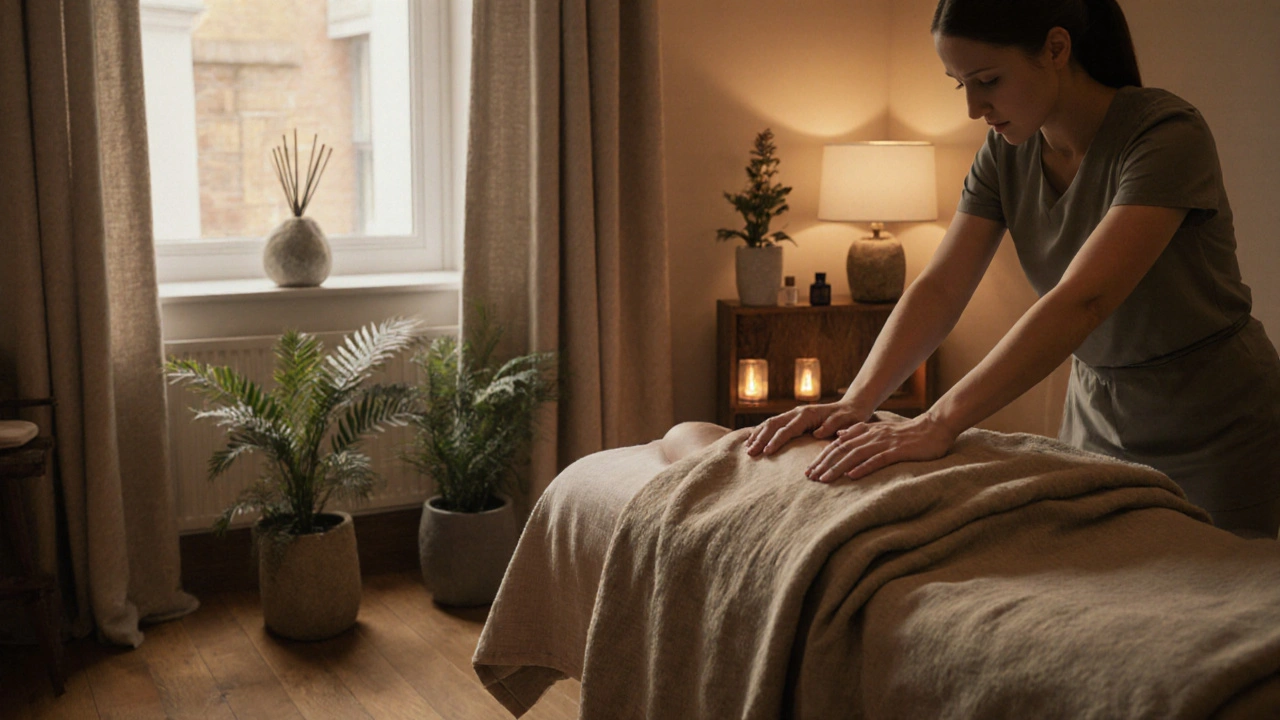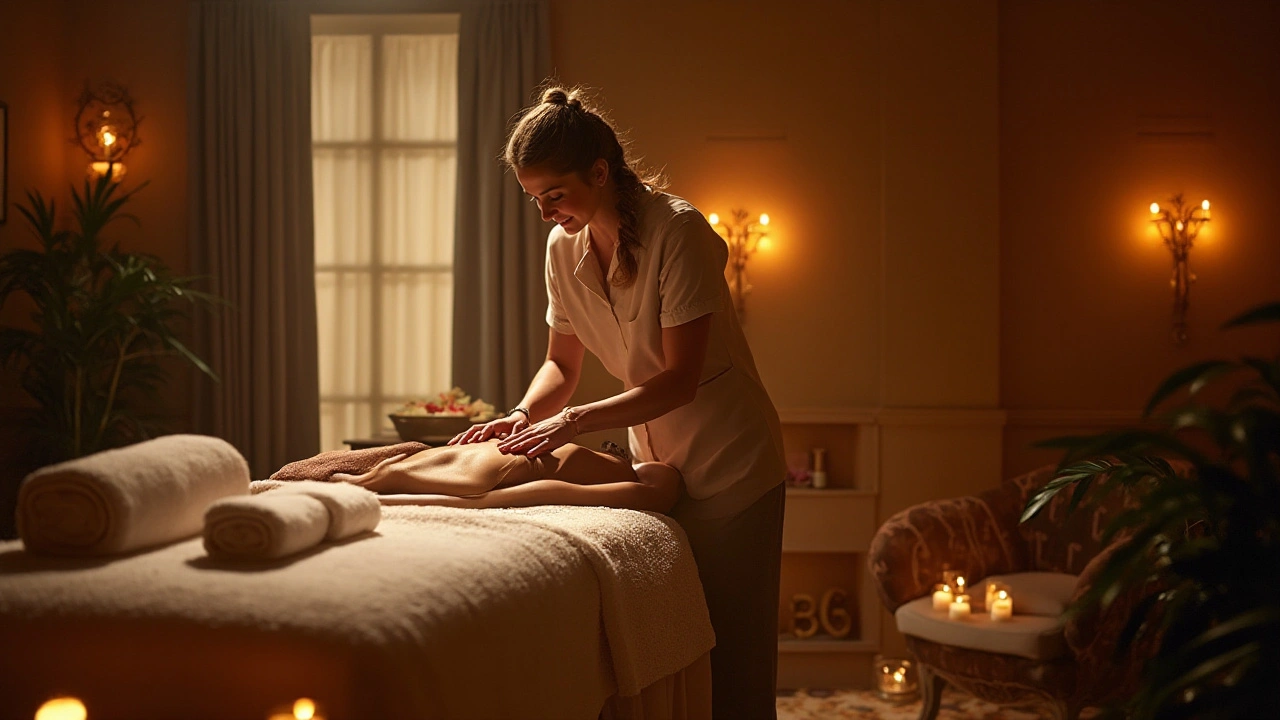Find the best relaxation massage near you in London. Discover types, pricing, safety tips, and where to book for real calm-no fluff, just results.
Massage Near Me: How to Find the Right Therapist in London
Feeling tense after a long day? A good massage can melt that stress away, but it only works if you pick the right place. Here’s a straightforward guide to help you locate a reliable massage near you, whether you’re in Central London or a neighborhood park.
Where to Search for Local Massage Services
Start with a quick Google search using “massage near me” plus your postcode. The map results show therapists that are actually close by, saving you travel time. Don’t overlook review sites like Trustpilot or local Facebook groups – real clients often share what they liked or didn’t like. If you have a favourite gym or yoga studio, ask if they partner with any therapists; many offer on‑site sessions at a discount.
Mobile outcall services are another option. They bring a portable table to your home or hotel, so you can relax in familiar surroundings. When you see a “mobile massage” label, check if the therapist carries their own linens, oils, and sanitising wipes. That little detail tells you they care about hygiene.
What to Look for in a Good Therapist
Credentials matter. In the UK, a qualified therapist usually holds a Level 3 or Level 4 diploma from an accredited school. Look for “registered therapist” or “member of the UK Register of Massage Therapists” on their profile. A short phone call can reveal if they keep records, ask about any health issues, and explain their approach.
Different styles suit different goals. Swedish massage is great for overall relaxation, while deep‑tissue tackles stubborn knots. If you need help with sports recovery, search for “sports massage near me”. For anxiety or sleep problems, a gentle Indian head massage might be the answer. Knowing what you want narrows the field quickly.
Pricing varies, but don’t automatically pick the cheapest option. A typical 60‑minute session in London runs between £55 and £85. Higher rates often include a more experienced therapist, a quieter room, or extra amenities like aromatherapy. Ask about package deals; many places offer a discount for three or five sessions booked upfront.
Finally, trust your gut. The first few minutes of a session should feel comfortable. A good therapist will ask about pressure preference, listen to feedback, and adjust as needed. If you leave feeling worse, it’s a sign to try someone else.
Now that you know where to look and what to check, booking is simple. Most therapists accept online bookings through a calendar widget – just pick a time slot, fill in your details, and you’ll receive a confirmation email. Some still prefer a quick call, especially if you have special requests like a specific oil or a quiet room.
Remember to arrive a few minutes early, drink water, and let the therapist know any injuries or areas to avoid. A short chat before the massage sets the tone and ensures you get the most out of each session.
Whether you’re after a quick 30‑minute tension release or a full‑hour relaxation ritual, the “massage near me” search can lead you to a professional who fits your needs. Follow these steps, stay clear about what you want, and you’ll be on your way to feeling lighter and more relaxed in no time.
Find the best massage near you in London with honest reviews, pricing guides, and tips to choose the right therapist. No fluff-just real relief for tired bodies.
Discover how to find the best local massage in London for stress relief. Learn styles, pricing, safety tips, and where to book your relaxing session today.
Discover how finding a 'massage near me' can melt away your stress and bring real relaxation into your life. This article breaks down everything you need to know about therapeutic massages, how to pick the best place near you, what actually happens during a session, and how much you can expect to pay. You'll get the inside scoop on the different types of massages you can try, plus crucial tips to make sure your session is safe and comfortable. From practical benefits to navigating your local options, this guide will help you find a better way to unwind. Start your journey to less stress and a happier, healthier you.
Looking for the best massage near you but aren't sure where to start? This guide breaks down different types of massages, how to choose the right spot, what to expect during your session, and how to make sure you're getting a safe, relaxing experience. You'll get clear tips on pricing, booking, and the most popular massage services in your area. Find out how to match your stress level and needs to the perfect massage style. Ready to take the edge off your day? Let's help you unwind and find that ideal massage nearby.
Looking for the best massage near you but not sure where to start? This guide breaks down everything you need to know—from types of massages to what to expect during your first session. You'll get insider tips on how to book, what it should cost, and how to spot a safe, quality spot right in your neighborhood. Plus, find out what sets different massage styles apart and get answers to those questions you’ve probably Googled. No fluff, just straight-up advice you can use today.
Feeling stiff or burned out? Regular massage sessions near you are more than just a treat—they can boost your mood, cut stress, and even help with pain relief. This guide breaks down the real-life benefits of booking a local massage, what to expect, and how to choose the right service. You'll also find tips for keeping your sessions safe and affordable. Ready to upgrade your self-care routine?
Curious about what a healing massage near you can actually do? This article breaks down what to expect, the types of healing massages available in your area, and why locals swear by the results. You’ll get practical tips on how to book, what it might cost, and how to make sure your experience is both safe and rewarding. Whether you’re new to massage or a regular, you’ll walk away with actionable advice you can use right away. Get ready to feel better, move easier, and finally relax.
Looking for the best massage near you? This guide breaks down the different types of massages, what happens during a session, and how to pick the right local spot. You’ll find tips on booking, prices, and staying safe, plus a handy comparison with related services. Get ready to treat yourself to a day of true relaxation without any guesswork. Perfect if you want to unwind and recharge without leaving your neighborhood.
If you think massages are just a treat, think again. These sessions are not only about indulgence but also about genuine relaxation, helping your mind and body unwind from daily stress. Discover why finding a 'massage near me' can be a game-changer for your well-being. From understanding the benefits to choosing the right type of massage, get ready to explore a world of relaxation right around the corner.
Experience the sublime pleasure of a sensual massage that transcends the ordinary, offering a release from the daily grind. Dive into a world where your every knot and tension is seductively untangled by skilled hands that know just how to tease and please. This guide provides insight into finding the perfect massage experience near you, designed to soothe your mind and body while indulging your senses. With a blend of factual information, tips, and a splash of risqué narrative, this read is meant to enlighten and entice.











